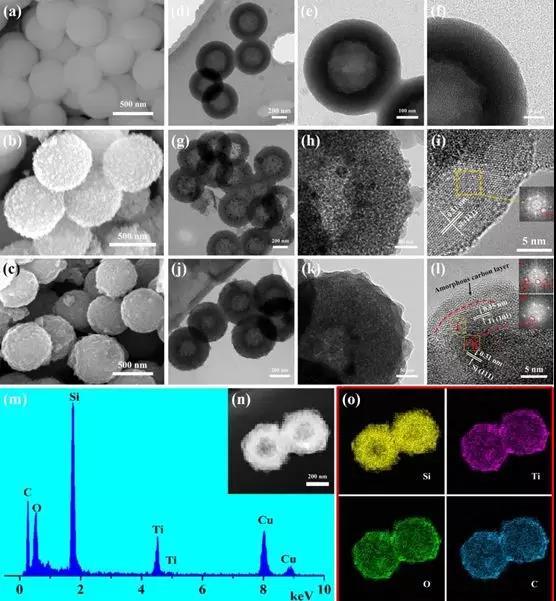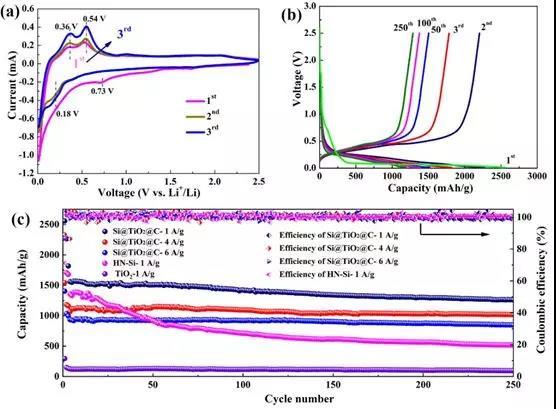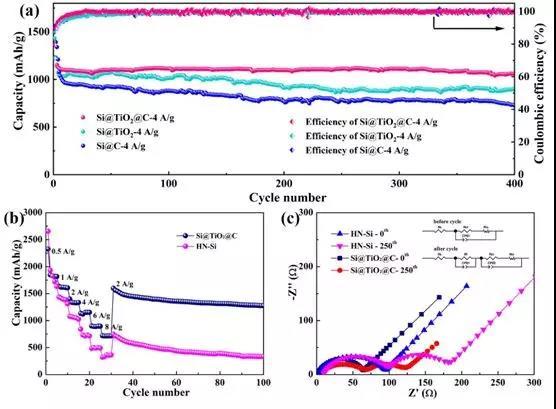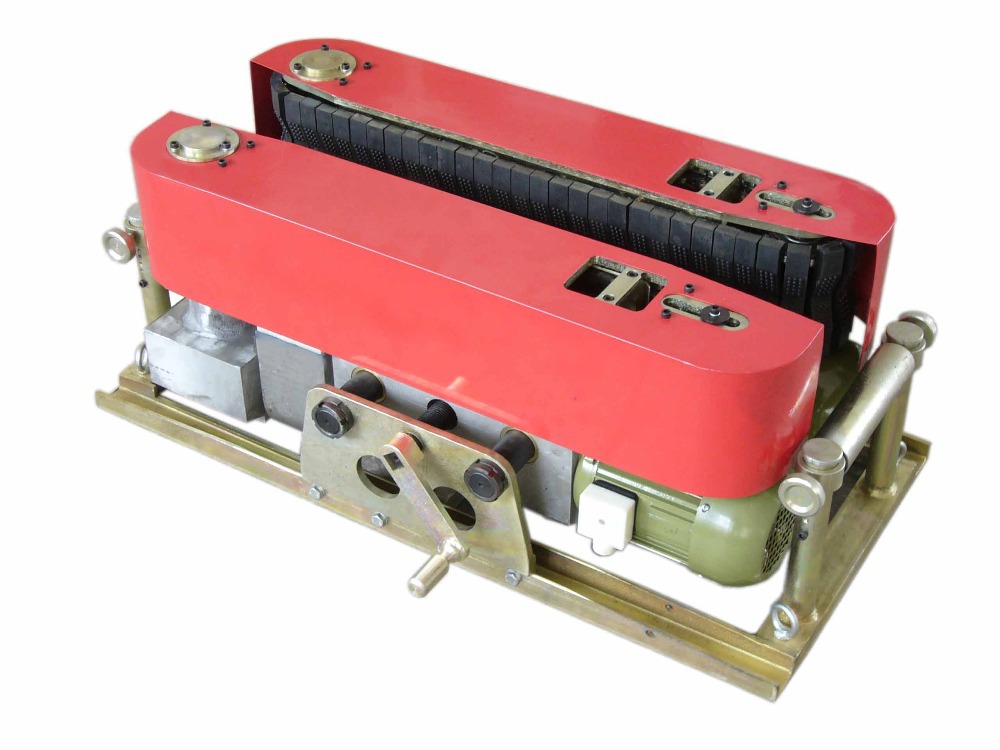In recent years, with the country's strong support for new energy vehicles, the sales of clean and pollution-free electric vehicles have achieved a blowout growth. However, the current commercial lithium-ion battery anode material graphite can only reach a capacity of 300 ~ 340mAh / g in practical applications, and it has been difficult to improve, far from meeting the urgent needs of new market users for high-performance lithium-ion batteries.
Therefore, more and more people are devoted to the research and development of battery materials with high energy density. Silicon anode materials are favored by researchers because of their high theoretical specific capacity (3752mAh / g), environmental friendliness and low cost, and are expected to become the main force of the next generation battery system.
However, there are still many problems in the research and development of silicon anode materials. For example, the volume expansion effect of elemental silicon during charge and discharge is as high as 300%, which causes structural collapse and powdering, which seriously restricts the development and development of silicon as a cathode material for lithium ion batteries. application. To solve the above problems, suppress the volume expansion effect in the electrode reaction, and improve the poor conductivity of elemental silicon and other issues have become the key to research.
In view of this, the research group of Professor Wang Xianyou of Xiangtan University successfully prepared the double-layer coated hollow spherical Si @ TiO2 @ C anode material in a one-step method.

â–² Figure 1 Si @ TiO2 @ C anode material (a) preparation diagram and (b) structure diagram
In this work, hollow Si spheres were prepared by template-free method and magnesia reduction method, and then hollow spheres HN-Si were double-coated with butyl titanate and glucose to prepare Si @ TiO2 @ with rich pore structure and high stability C anode material.

â–² Figure 2 Electron micrographs of SiO2 (a, df), HN-Si (b, gi) and Si @ TiO2 @ C (c, jl)
First, during the charging and discharging process, the Si nanospheres with hollow structure can self-adjust the huge volume expansion; secondly, due to its structural advantages, the TiO2 shell layer can increase the lithium ion transmission rate (volume expansion rate is only 4%), and The volume expansion of the Si active material is further constrained to transfer to the inner cavity rather than outward; finally, the outer C layer further improves the conductivity and structural stability of the composite material.
The results pointed out that the traditional single-layer coating strategy cannot meet the current requirements for the structural stability of electrode materials when facing the huge volume expansion effect of Si anode materials, and this new double-coating-hollow strategy Can effectively improve the volume expansion effect of silicon and improve its conductivity.
The results show that the hollow Si @ TiO2 @ C nanosphere anode material with double-layer stability synthesized by the magnesia reduction method and the sol-gel method, for the first time at a current density of 0.2A / g and an operating voltage of 0.01-2.5V The specific discharge capacity is 2557.1mAh / g, and the Coulomb efficiency is 86.06%. At a current density of 1A / g, the reversible specific capacity of Si @ TiO2 @ C anode material after 250 cycles is still 1270.3mAh / g. The undischarged HN-Si anode material has a specific discharge capacity of 2264mAh / g for the first time, and the Coulomb efficiency is only 67.3%.
This double-clad-hollow structure design can shorten the transmission path of Li + and electrons. The rich pore structure can also promote the full infiltration of the electrolyte and improve its rate performance. At the same time, the uniform TiO2 shell and C layer greatly increase the Si @ TiO2 @ C The structural stability and conductivity of the negative electrode material.

â–² Figure 3 Electrochemical properties of Si @ TiO2 @ C anode material

â–² Figure 4 Si @ TiO2 @ C (a) Schematic diagram of working device, (b) Structural change of charge and discharge under TEM and (c) Lithization (delithiation) diagram

â–² Figure 5 Cycle performance, rate performance and impedance analysis
In summary, the bistable cavity structure design in this study can promote the further research and development of silicon-based anode materials, and also provide a reference for the study of anode materials with severe volume expansion and poor conductivity.
The Cable laying machines over two pairs of propelled pulleys. Two counter pulleys press the cable into the grooves of the two driving pulleys. The cable pusher tapered pulleys consist of a special high elastic and wear resistant rubber material, thus Cable Laying Equipment ensuring adequate friction.
The hydraulic power Cable Blowing Machine pack is connected with the pusher BKS 400 by two hydraulic hoses; the operation cable pusher can be easy managed from the ground, also if the pusher is fixed in a tray.
The hydraulic drive Cable Laying Equipment of the BKS 400 can be operated by a separate power pack or by another machine like an excavator, if the below listed parameters can be provided. The connecting hoses between the BKS 400 and the power pack are equipped with a flow divider, which guarantees the infinitely variable adjusting of speed.

Cable Conveyor Crawler,Power Cable Conveyor,Conveyor Cable,Cable Tube Conveyor
NINGBO MARSHINE POWER TECHNOLOGY CO., LTD. , https://www.marshine-power.com